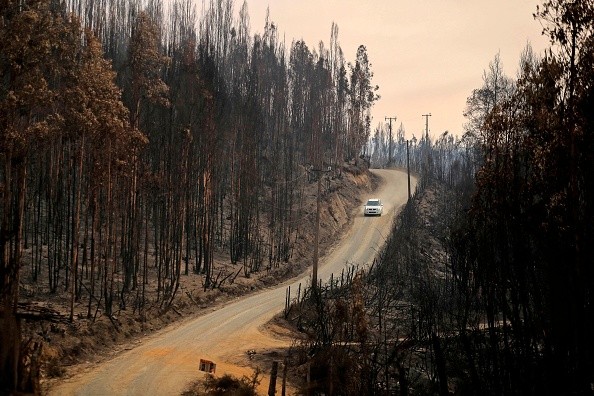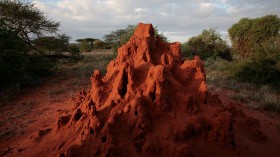A landmark study has discovered that the world's forests are losing their ability to absorb carbon as a result of increasingly "unstable" conditions caused by humans.
According to scientists writing in Nature, dramatic changes to forests and other habitats that store carbon in plants and soils are becoming more likely in some regions around the world, with less carbon consistently absorbed by the "land carbon sink" provided by trees, soil, and plants.
Climate 'spiral' threatens land carbon stores
 (Photo : JAVIER TORRES/AFP via Getty Images)
(Photo : JAVIER TORRES/AFP via Getty Images)

According to scientists, the short-term effects of rising temperatures, deforestation, and farming on many vulnerable landscapes mean that carbon stores on land are less likely to recover in the long term
This reduces the land's overall capacity to absorb carbon and undermines global efforts to limit or reduce greenhouse gas levels in the atmosphere, as per ScienceDaily.
Dr. Patrick McGuire, a climate scientist at the University of Reading's Department of Meteorology and the National Centre for Atmospheric Science branch, was a co-author of the new study, which was led by colleagues at CREAF, Barcelona, and Antwerp University.
Researchers discovered that from 1981 to 2018, ecosystems around the world went through different phases, ranging from high productivity, when plants could absorb more carbon, to low productivity, when plants could absorb less carbon.
Because ecosystems cannot adapt to climate change, deforestation, and changes in biodiversity, among other factors, the magnitude of these fluctuations increases the risk of destabilization.
The study, published Wednesday, February 22, 2023 in Nature, discovered that the regions most at risk have less forest cover and more cropland, are warmer and have experienced greater temperature rises, which could be related to an increase in extreme weather events such as heatwaves and cold snaps.
The Mediterranean Basin, Southeast Asia, and the west coasts of North and Central America have been identified as the most vulnerable areas.
According to the researchers, these vulnerable areas have developed a memory, also known as a "temporal autocorrelation," which means that years with lower carbon uptake are more likely to be followed by years with lower carbon uptake.
According to the researchers, as less carbon is absorbed in areas where forestland dominates, the likelihood of scrubland becoming the permanent landscape increases, and forests may be lost forever.
While several regions are at risk of abrupt changes in their landscapes, there are parts of the world where carbon absorption levels are consistent and ecosystem collapse as a result of carbon fluctuations is less likely.
This includes Amazonian tropical forests and areas of central and northern Europe where carbon absorption capacity has increased.
However, the researchers warned that other climate threats, such as future shifts in regular rainfall patterns, face regions such as the Amazon.
According to scientists, these global variations may make it more difficult to predict the global impact of carbon-absorption schemes, such as tree planting, in assisting the world in reaching carbon net zero.
Also Read: Adapting to Climate Change Could Still Mean Environmental Troubles
Forests as carbon sources and carbon sinks
If a forest emits more carbon than it absorbs, it is considered a carbon source.
Forest carbon is released when trees burn or decay after death (as a result of old age or of fire, insect attack, or other disturbance), as per UNECE.
If a forest absorbs more carbon from the atmosphere than it releases, it is considered a carbon sink.
Photosynthesis absorbs carbon from the atmosphere.
It then settles in forest biomass (trunks, branches, roots, and leaves), dead organic matter (litter and dead wood), and soils. Carbon sequestration refers to the process of carbon absorption and deposition.
Climate change has an impact on forests and their role in the carbon cycle.
Rainfall and temperature changes can have either negative or positive effects on forest health and productivity, which are difficult to predict.
Depending on the circumstances, climate change will either reduce or increase carbon sequestration in forests, raising questions about the extent to which the world's forests will be able to contribute to long-term climate change mitigation.
Forest management activities can influence carbon sequestration by stimulating certain processes and mitigating the effects of negative factors.
Related article: Heatwave Prompted by Climate Change May Cause Shortage of Christmas Tree This Year
© 2024 NatureWorldNews.com All rights reserved. Do not reproduce without permission.





